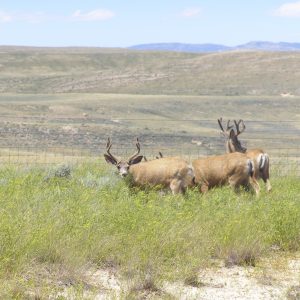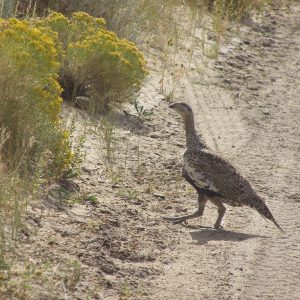When I moved to El Dorado Hills back in May, I had no idea if I would still be in California during the Christmas season…yet here I am. My experience as an intern for the Pine Hill Preserve (BLM Mother Lode Field Office) has offered me a plethora of opportunities to learn a wide range of management strategies, become familiar with a variety of plant species, and network with individuals from other organizations who are working from different directions toward the same goals as my mentor who is the manager of Pine Hill Preserve. During these past six-plus months I have been fortunate to be involved in various aspects of conservation and land management. In short, I have been involved in accomplishing something good. More specifically, I have…
- gotten on my hands and knees in oak woodland habitat where poison oak is present to take pictures of and use a hand lens to identify male and female plants of the dioecious plant Galium californicum ssp. sierrae, a rare and federally endangered plant in the Pine Hill Preserve;
- recorded and organized data for as well as photographed several rare plant monitoring projects–counted reproductive structures as well as measured height and diameter of Calystegia stebbinsii plants; conducted point and line transects to see how non-native shrub removal affected the growth of the rare Ceanothus roderickii; counted stems and reproductive structures of the rare Wyethia reticulata to determine effects of masticating equipment and chip deposition on its growth and population size; counted stems and estimated % cover of shrubs in a G. californicum ssp. sierrae habitat; measured C. roderickii cover along transects within plots to monitor its response to shrub removal;
- surveyed proposed fuelbreaks for the presence of rare plants such as Fremontodendron californicum ssp. decumbens and Iris hartwegii;
- collected seeds for the SOS program–a total of 17 collections of 13 different species (including 2 fleshy fruits);
- operated a GPS receiver to map the locations of SOS seed collection populations, rare plants and weed populations in the field;
- created maps using ArcGIS of SOS seed collections;
- pulled yellow star thistle and tocalote in multiple locations;
- edited, revised, and reformatted a rough draft of an educational brochure about the Pine Hill Preserve and its rare plants that has now been printed and are available to the public;
- created and presented a PowerPoint presentation about the Pine Hill Preserve to leaders of a group interested in organizing monthly service days with the Preserve;
- participated in a couple of volunteer work days to lay jute matting and straw wattles to prevent soil erosion along a new trail;
- introduced two girl scout members to some of the plants of Pine Hill Preserve by showing them the plants in the field (As a community service project, they will be creating educational childrens’ activity pages about the Preserve to post on the Preserve’s website.);
- assisted with public meetings–in office preparations such as making sure the projector worked and making signs, setting up the meeting room, taking meeting notes, and cleaning up–regarding the community-based process to develop a management plan for Kanaka Valley, a newly acquired parcel of land;
- saw a potentially new species or subspecies of the rare plant Calystegia stebbinsii;
- picked up trash on public land to keep the land safe, healthy, and attractive;
- and posted signs to inform the public of land use rules and upcoming public meetings.
As I near the end of my experience as a CLM intern, I look forward with confidence in the knowledge and skills I have gained through this internship at the BLM Mother Lode Field Office that I will be an effective employee for any federal, state, county or private agency whose primary aim is to manage our public lands and protect our natural ecosystems. There is much to be done in terms of biological and ecological research and land management, especially in the face of continuing development of communities, industries, transportation infrastructures, and major energy projects.
Before I entered this career field, I was very aware that conservation and preservation of our natural resources and ecosystems could not be accomplished by just one; it requires the contributions of many. However, that does not mean the power of one cannot positively influence conservation effort. My internship experiences have bolstered my belief of the following mindset: Just because one person cannot accomplish everything that needs to be done does not mean that one person cannot accomplish something good…and something good is far better than nothing at all.































